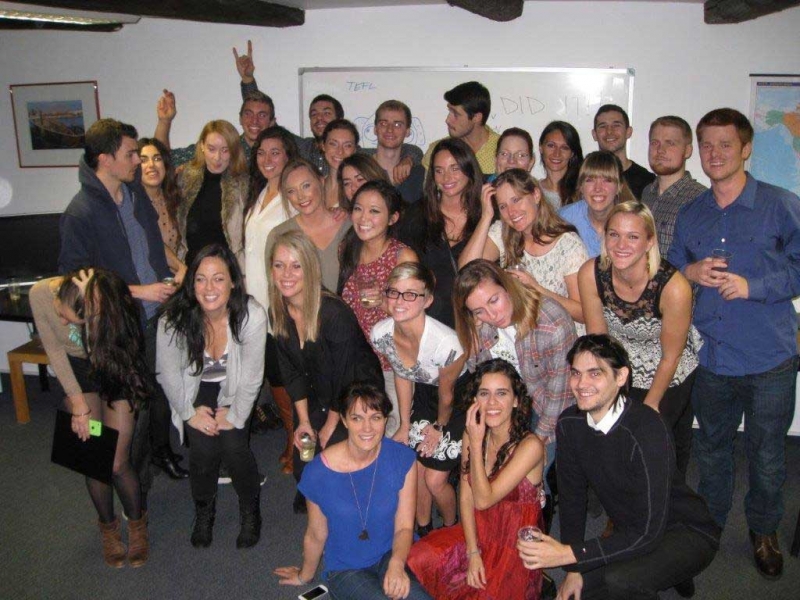There are a handful of standard topics of conversation that volunteers worldwide tend to gravitate toward, no matter what field or country they may be working. These topics generally include the gloating, groaning and grumbling of working in X country, and usually involve the exchange of movies, music, books, stories about work or cultural mishaps rivaling each other in ridiculousness and hilarity, and—especially in Peace Corps—the perfunctory bowel movement updates. (The latter being brought up as naturally as one’s hometown; “Where are you from and how’s your explosive diarrhea?”)
Food is also a hot topic. The chain restaurants we crave, the comfort foods we miss. What do we do when those of us volunteering in Madagascar get together? We cook, we eat (and drink) and we talk about food while we’re doing it.
So naturally it makes sense to share recipes. With limited ingredients at the market, minimal resources (often cooking without electricity or oven), and on an extremely restricted budget, we learn to be creative in the kitchen—or whatever small corner of the mud brick home that suffices for one.
A fellow volunteer and I have devoted a large part of our service here to perfecting our culinary techniques, which have expanded from the standard bread making and cake baking into much more complicated (or simplified, depending on how you look at it) methods—such as starting and maintaining a charcoal fire long enough to produce a pineapple upside-down cake, building a makeshift oven using sand, tin cans and two pots of varying size, and other “unique talents.”
We have developed a knack for finding resourceful substitutions for ingredients, and though we like to think we’ve also developed a more refined palette, we both agree that it’s more probable that our eating standards have lowered drastically since being here.
But it must be said that we’ve made some delicious dishes in Madagascar, from the savory to the sweet: hearty Christmas stews, homemade Super Bowl-style chili and cheese nachos, chunky cinnamon granola, moist pumpkin bars.
We’ve experimented with every item of produce at the market when in season, and we’ve hit (and missed) time and time again. But that’s the fun of it, getting it wrong once in awhile and being able to laugh about it. Like the salsa we added cinnamon to in a bold act of artistic experimentation—it tasted like Christmas in my burrito (funny, yes, but never again).
This is one recipe that we both absolutely loved for its simplicity and scrumptiousness, adapted from epicurious.com:
Cocoa-Carrot Cupcakes with White Chocolate Chips
• 1 1/2 cups canola oil
• 4 large eggs, at room temperature (we didn’t have a fridge, so everything was room temperature)
• 1 3/4 cups all-purpose flour
• 5 tablespoons unsweetened cocoa powder
• 2 teaspoons baking soda
• 1/4 teaspoon kosher salt
• 1 pound (about 4 cups) carrots, grated
• 2 cups white chocolate chips (or a white chocolate bar, cut and crushed)
Madagascar has these fabulous white chocolate coconut bars called “Mini Choco” that work really well in the recipe. If you don’t have them in your country, you might consider adding a sprinkle of grated coconut if you have it. The combination of carrot, white chocolate, and coconut is divine!
Preparation
• Assuming you have an oven, preheat it to 350°F. Cupcake/muffin liners and tins would be ideal, but for us poor volunteers, both were unavailable. Instead, we greased some (thoroughly cleaned) old tomato paste tin cans and used our makeshift “oven” over charcoal. (There was no residual tomato taste, I promise!) The recipe should yield about 24 cupcakes.
•Thoroughly mix the sugar, oil, and eggs. Mix the dry ingredients (flour, cocoa powder, baking soda, and salt) in a separate bowl. Add to the oil mixture to the dry ingredients then add the carrots and chocolate chips, and mix again. Scrape down the sides of the bowl.
• Fill the greased tins with the batter mixture. Transfer to the oven and bake until a tester comes out clean and the tops are slightly domed, 22 to 25 minutes. Let cool in the pan for 5 minutes, then transfer cupcakes to a wire rack, if you have one.
But of course we didn’t have a wire rack or the patience to wait for the cupcakes to cool—so we ate the gooey chocolate goodness spooned straight from the can. It was so much more enjoyable that way.
Verge contributor Charity Yoro and her culinary partner-in-crime, Kristen “Wallie” Walling also post videos of their cooking adventures in their series From Coal to Cupcake. Future plans involve publishing a cookbook featuring nutritious Malagasy-American fusion recipes, with ingredients and techniques adapted for those living or working in the developing world.
Add this article to your reading list



